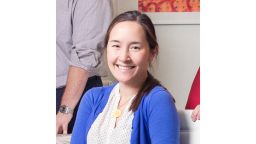Editor’s Note: Priscilla Chan is CEO of The Primary School and co-founder of the Chan Zuckerberg Initiative. She is a practicing pediatrician and former educator and focuses on integrating health and education through the school’s design. Meredith Liu is president and COO of The Primary School. She has spent her career in urban K-12 education, including Match Education and Codman Academy. The opinions expressed in this commentary are solely those of the authors.
Story highlights
Priscilla Chan, Meredith Liu: Prolonged stress at home can disrupt development and set children back before school even begins.
Writers: "The Primary School" aims to create model for integrating education, health care to serve low-income, high-needs children
All children have incredible potential, most with parents, teachers and other adults in their lives who want the best for them. Unfortunately, many schools, particularly those that serve children with the greatest need, face obstacles that limit children’s educational success – rote curriculums, insufficient support for teachers and scant extracurricular options, to name a few.


Educators, parents and policymakers have long acknowledged such obstacles, but we now know that there is another significant consideration: Prolonged stress at home can disrupt development and set children back before school even begins.
One year ago, we opened The Primary School to 51 4-year-olds from East Palo Alto and Belle Haven, California. Since then, we have welcomed another 200 low-income children and their families to our integrated approach to education and health care.
As we begin our second school year, we want to share some of what we have learned from our effort to build a model of care that truly supports the physical, intellectual and emotional needs of our community’s highest-need children. And while we are still in the early stages, and have much more to learn, part of our long-term mission is also to identify innovative solutions for how to serve the needs of the “whole child” – smart approaches that can one day be deployed in communities across the nation.
Why we need this
A growing body of research shows that trauma at home can seriously affect a child’s health and education. Physical or emotional abuse, neglect, parental mental illness, exposure to violence or the accumulated burdens of poverty can trigger what is known as a “toxic stress” response.
In the short term, this can inhibit children’s ability to learn, to manage emotions and build relationships with peers, putting them at a disadvantage before they ever even set foot in a classroom. Children who have experienced four or more traumatic experiences are more than 30 times more likely to have a learning or behavior problem than their more fortunate peers.
In the long run, toxic stress can actually disrupt the development of the brain and other organs and body systems and increase the risk for chronic disease, heart attack, stroke, mental illness and cognitive impairment well into adulthood.
The condition is not uncommon. A seminal study led by the Centers for Disease Control and Prevention and Kaiser Permanente found that one in five adults, at all income levels, had experienced three or more adverse childhood experiences.
Despite the prevalence of toxic stress and the severity of its impact on children’s lives, existing education, health, and social support systems are not set up to help the children most likely to experience trauma, which often goes untreated. At The Primary School, we are seeking to acknowledge and address toxic stress, so we can arm our children with the academic skills they need to succeed in college and beyond.
This incredibly complex problem cannot be solved by tinkering at the edges. Instead, we have tried to build an entirely new system of care centered around a child’s comprehensive needs. We are still very early in our work and are learning more every day, but our approach is grounded in three important ideas.
We start early
The majority of brain development happens in the first five years of life. The achievement gap between low-income children and their wealthier peers begins to open as early as nine months of age. And still, most children start school at age 5.
By then, much of the wiring that enables learning and socio-emotional management is in place. We work with families as early as birth to reach children in this critical time – helping caregivers build strong relationships with their children – and our full-time school begins at age 3.
We work with, not around, families
Home life and environment are stronger predictors of academic and health outcomes than either formal education or health care. Furthermore, research has shown that consistent nurturing from an adult has the greatest power to protect a child from toxic stress. We know all parents want the best for their children and have tremendous strengths as individuals and parents.
And so each parent works with a coach and teachers to help them promote learning at home, achieve their own goals and build powerful connections with other parents. We also partner with existing community organizations to connect families to much-needed resources, including food, housing and legal and mental health services.
We unite health care and education in a seamless system of care
Health-care providers and educators rarely work together to address childhood stress and trauma. Educators often lack access to critical information that could help them understand what they are seeing in the classroom. Physicians also are often unaware of physical or emotional issues that show up at school first, or the conditions at home that may impede development.
Another barrier physicians encounter is in getting families to make long-term behavioral changes, such as interventions for developmental delays, obesity and dental care, that require regular support and reinforcement. So, we partner closely with primary-care providers to ensure children are getting high-quality care that extends beyond the walls of the physician’s office.
For every child, a group of adults, including the parent, teacher, coach and health-care provider, works together to construct a shared understanding of the child and better solve health problems. This may include a physical health need like asthma that requires consistent support at home and school, or a mental health concern that is difficult to diagnose without a full view of child behavior.
Our experience with this model makes us optimistic. Every day, we see anecdotal evidence of what scientific research has already shown: Children and adults can build resilience and thrive even in the face of trauma. We hope that with the support of our families and community partners, we can provide a strong foundation for all children to succeed in school and life. And we hope other schools and health-care systems around the country can benefit from what we learn here.
We all owe our children more than incremental solutions. We owe them a new system that gives every child, regardless of background, the opportunity to live a healthy, independent and meaningful life. With so much work ahead of us, we look forward to sharing our stumbles and triumphs as we learn for and with our children, and are excited to be among the practitioners and policymakers committed to this challenge.



